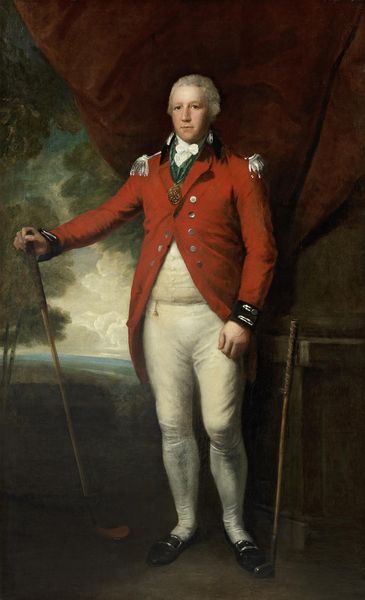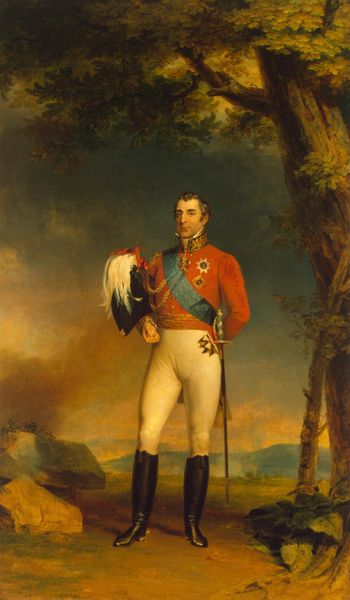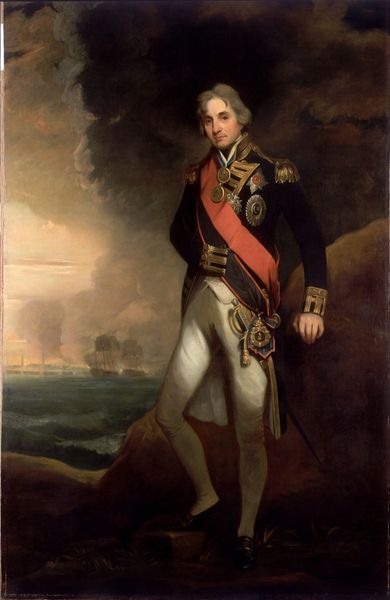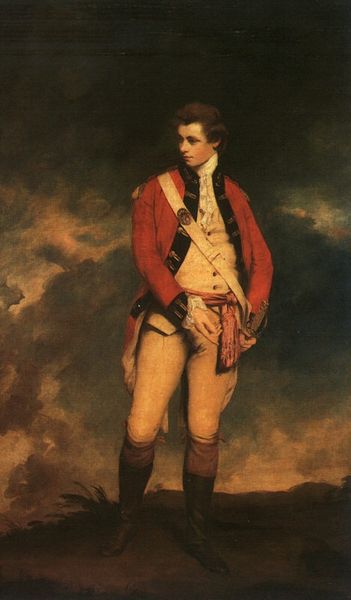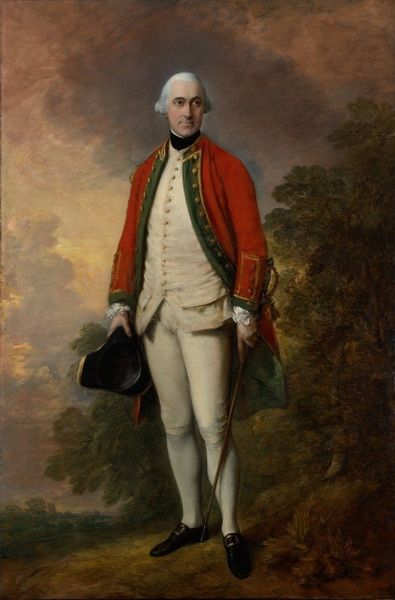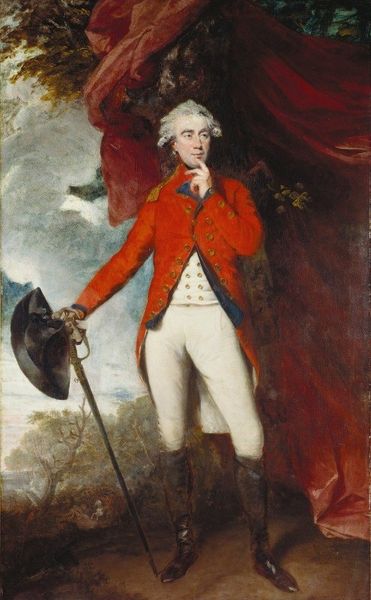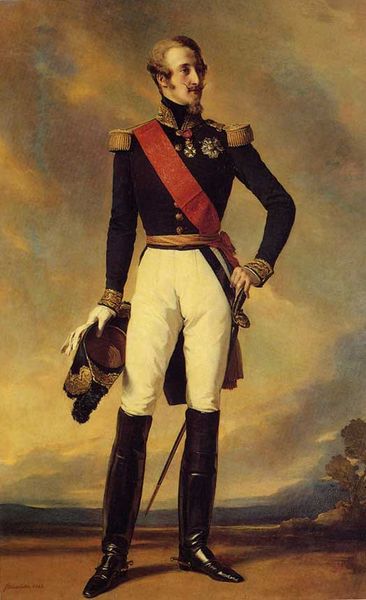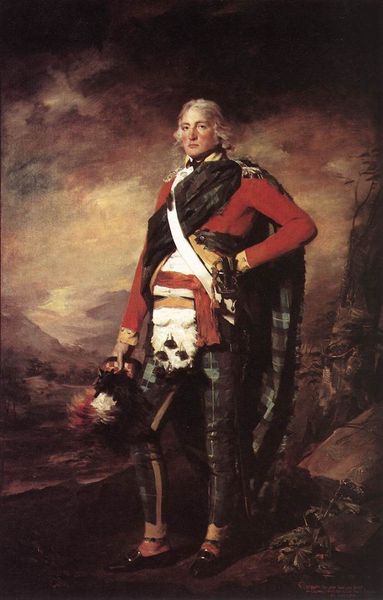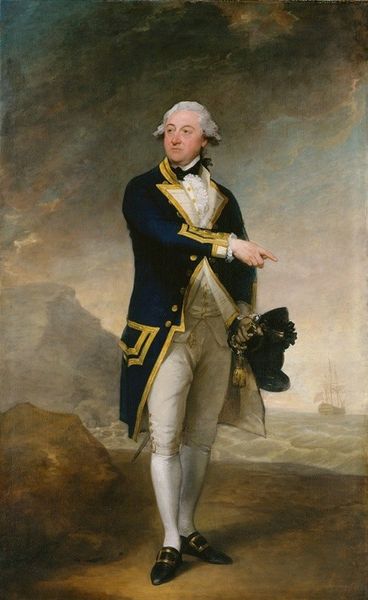
oil-paint
#
portrait
#
figurative
#
oil-paint
#
landscape
#
oil painting
#
romanticism
#
genre-painting
#
portrait art
Copyright: Public Domain: Artvee
Curator: This painting, by Thomas Gainsborough, presents an officer of the 4th Regiment of Foot. Let’s take a moment to observe. What are your initial thoughts? Editor: Immediately, there's this stark contrast between the human figure in the foreground, brimming with youthful poise, and the tumultuous, almost romantic landscape receding behind him. It feels like a stage for something…imminent, perhaps. Curator: That sense of "imminent" is palpable, isn’t it? This work invites consideration within the framework of 18th-century military portraiture, specifically its role in constructing and celebrating ideals of British imperial power. Think of the subjects of these works—agents of the Empire—being presented to the public. Editor: Exactly. I’m immediately drawn to the way he leans so casually against the rock. It speaks to a sense of entitlement, a relaxed dominion over the land—which isn’t really his, is it? The presence of the dog too, looking up at the hat, brings to mind themes of loyalty, yes, but also the historic function of the animals within systems of privilege and land ownership. Curator: Good points. Gainsborough, coming from a family deeply involved in the wool trade and possessing acute insight into class and social hierarchies, utilizes a style that subtly conveys power and status. Editor: I agree. Although, there is something that seems…almost posed or performed. He doesn't look directly at us, yet all the elements—the landscape, his attire, the dog—work to craft a certain narrative of military strength and natural order. Curator: Consider the economic and social backdrop. The Empire was in the midst of constant conflicts; it needed these heroic portrayals for their impact at home as much as on foreign interests. Editor: And how that heroic narrative often erases the lived experience and cultural complexities of those it subjugates. Looking at his almost blank expression, I can’t help but wonder what stories aren't being told here, or whose perspectives are consciously absent from the frame. Curator: It is essential to ask these questions and situate portraits such as this in relation to broader social dialogues about the cost of nation building, imperial reach, and the impact of its policies. Editor: Definitely. It leaves you wondering, doesn’t it? Even something as seemingly straightforward as a portrait reveals layers of complicated context when we view it critically.
Comments
No comments
Be the first to comment and join the conversation on the ultimate creative platform.
